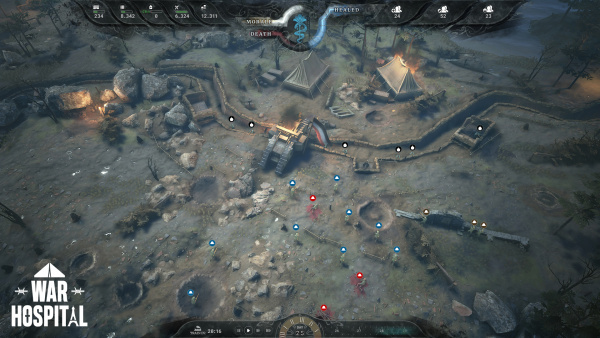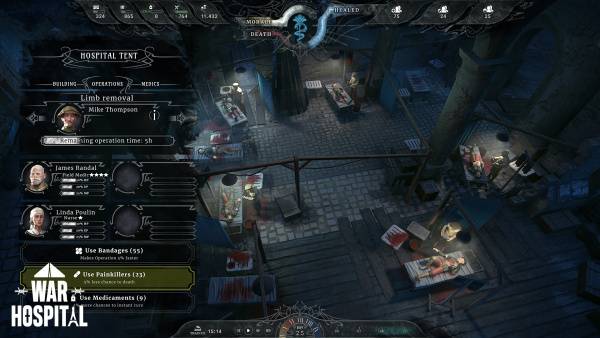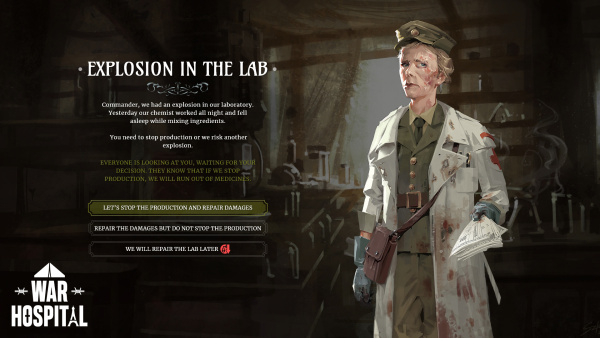GC22: War Hospital – We patch up what others shoot up – News
teasers
Something no Call of Duty elite killer or Command & Conquer general ever bothers to think about: What happens to all the soldiers on both sides who go down and don’t die instantly?
Nacon/BigBen showed an interesting concept at Gamescom 2022: War Hospital by Brave Lamb Studio lets you run a British field hospital in World War I – but one that urgently needs the soldiers you patched together to protect them in the trenches of that very hospital .
Your goal in this building/management game is to experience the end of the war, although there are probably three different endings. A game divided into three chapters should last six to eight hours, and thanks to procedural and random elements it should be worth playing again.
 |
| The Schürzengraben map is almost exclusively for spectators. |
In principle, there are three different maps (and in turn for three different seasons): The hospital, where you happily erect and upgrade buildings and divide staff or assign patients to doctors. The big trench map where there’s constant fighting but you can’t intervene – all you do here is send out medics who will then take the wounded to staging points, from where they’ll be taken further back and finally into land in your field hospital. And an abstract map of the surrounding area, on which you send out scouts to find more regions, resources and sometimes story snippets.
The wounded can vary in severity and have injuries in three areas: classic gunshot or shrapnel wounds, war gas burns and trauma. Accordingly, there are three types of treatment (and probably building chains). Of course, there is also a research tree that allows you to refine your treatment methods or medicine. The most important thing is to treat the wounded as effectively as possible and to keep morale high in the field hospital – because if either that morale drops too low or you run out of patched-up wounded (as new soldiers for the near front), it’s game over.
 |
| By clicking on the buildings in the field hospital (see above) you get to the detailed view, where you can arrange operations, for example. Or is one pill enough? |
Since you don’t have many doctors, you have to pay particular attention to their workload, which must not be too high either: Complicated operations or continuous use tire the doctors, which reduces their efficiency and morale. So it can be an advantage to resort to amputation instead of lengthy treatment – a person saved in this way is still better in a playful sense than if he dies, but you can no longer use him as a soldier.
In addition to the doctors, there are medics (retrieve the wounded from the trenches or transport them within the hospital), nurses (improve healing), mechanics (can drive trucks, construct or upgrade new buildings or repair damage to fortifications), scouts and dogs (the latter to increase the efficiency of units or buildings). As already indicated, you have nothing to do with the soldiers, they take their positions in the trenches autonomously after their healing.
All characters have small “personnel files”, the most important area of which is the condition, i.e. how the doctor or patient is doing. And of course: If too many patients die (sometimes these are also delivered from other front sections), morale goes down, due to successful surgeries, but also good decisions in the scout events, as well as by maintaining a minimum of workplace quality her up.
 |
| Events are triggered both in the camp and in the scout missions, which you can defuse through clever decisions or use to your advantage. |
The procedural elements mentioned include different quests related to the trenches (which resources are needed, how many soldiers), the wounds, generating VIP characters (which then have a small story), weather changes and the player’s decisions.
I’m not exactly blown away by War Hospital, but I’m also not a huge management game fan. The studio definitely deserves praise for the idea and its, in my opinion, serious and playfully interesting implementation. Let’s see if that’s fun for longer and if it’s sufficiently challenging.
Reference-www.gamersglobal.de